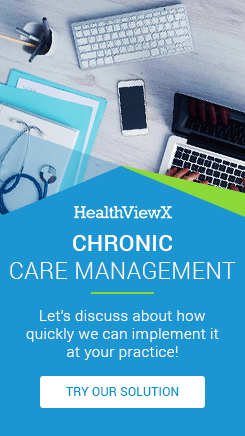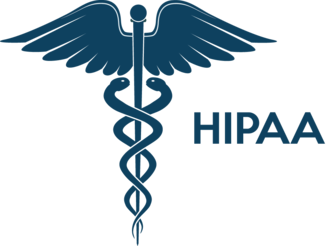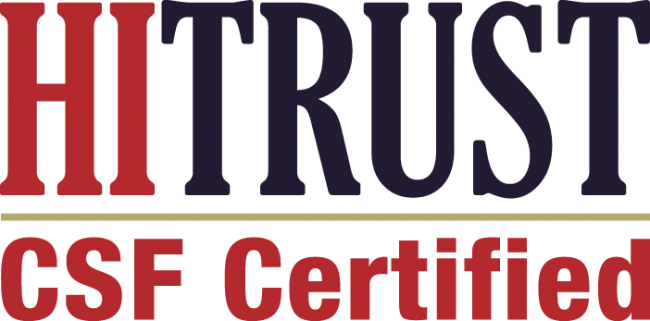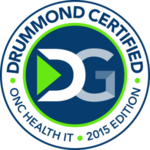Healthcare referrals remain one of the most fragmented processes in modern medicine. Primary care physicians might send referrals via secure email, specialists might receive them through antiquated fax machines, while digital platforms handle electronic referrals through various proprietary systems. This fragmentation creates inefficiencies, delays patient care, and increases the risk of lost or misdirected referrals. Multi-channel referral consolidation platforms are emerging as the solution to this complex challenge, offering healthcare organizations a unified approach to managing all referral types through a single interface.
The Current State of Healthcare Referrals
Healthcare providers today juggle multiple referral channels simultaneously. A typical large medical practice might receive referrals through:
Traditional Channels:
- Fax machines (still used by approximately 90% of healthcare facilities)
- Phone calls requiring manual documentation
- Physical mail and courier services
- Walk-in referrals requiring immediate processing
Digital Channels:
- Electronic Health Record (EHR) integrated referral systems
- Secure email platforms
- Proprietary healthcare communication apps
- Direct provider-to-provider messaging systems
- Patient portal referrals initiated by patients themselves
This multi-channel reality creates significant operational challenges. Staff members must monitor multiple systems, manually transfer information between platforms, and ensure nothing falls through the cracks. The result is often delayed care, frustrated patients, and overwhelmed administrative teams.
Understanding Multi-Channel Referral Consolidation
Multi-channel referral consolidation represents a paradigm shift from managing disparate referral streams to creating a unified ecosystem where all referral types converge into a single, manageable interface. This approach recognizes that while referral channels will continue to exist in multiple formats, the management and processing of these referrals can be standardized and streamlined.
The consolidation process involves several key components:
Intake Standardization: Regardless of how a referral arrives—whether through fax, email, phone, or digital submission—the information is captured and converted into a standardized format within the consolidated system.
Workflow Unification: All referrals follow the same internal processing workflow, ensuring consistent handling, documentation, and follow-up procedures across all channels.
Communication Integration: Responses, updates, and communications back to referring providers are managed through the consolidated platform, maintaining continuity regardless of the original referral channel.
How Modern Platforms Capture All Referral Types
Leading healthcare technology platforms like HealthViewX have developed sophisticated approaches to multi-channel referral consolidation. These systems employ various technologies and methodologies to ensure comprehensive capture:
Intelligent Fax Processing: Modern consolidation platforms utilize optical character recognition (OCR) and artificial intelligence to automatically process incoming faxes. The system can identify referral documents, extract key information such as patient demographics, referring provider details, and clinical information, and then populate standardized digital forms automatically. Advanced systems can even recognize handwritten notes and convert them into structured data.
Email Integration: Secure email channels are integrated directly into the platform through API connections or specialized email processing systems. When referrals arrive via email, the system automatically parses attachments, extracts relevant information, and creates referral records without manual intervention.
Phone Call Documentation: For phone-based referrals, the platform provides standardized intake forms that staff can complete in real-time during calls. Some advanced systems incorporate voice-to-text technology, allowing for automatic transcription of referral details during phone conversations.
Digital Referral Processing: Electronic referrals from EHR systems, health information exchanges, and other digital platforms are captured through standardized interfaces such as HL7 FHIR APIs. This ensures seamless data transfer while maintaining data integrity and security.
Patient-Initiated Referrals: Modern platforms also accommodate referrals initiated by patients themselves through secure portals, mobile applications, or online forms. These self-service options are particularly valuable for non-urgent referrals and can significantly reduce administrative burden.
The Technology Behind Consolidation
The technical infrastructure supporting multi-channel referral consolidation is sophisticated and multi-layered:
API-First Architecture: Modern consolidation platforms are built with API-first architectures that allow for seamless integration with existing healthcare systems. This approach ensures that the platform can communicate effectively with EHRs, practice management systems, and other healthcare technologies already in use.
Cloud-Based Processing: Cloud infrastructure provides the scalability and reliability necessary to handle varying referral volumes while ensuring system availability and data security. Cloud-based systems can automatically scale resources during peak referral periods and provide redundancy for system reliability.
Data Standardization Engines: These systems convert incoming referral information from various formats into standardized data structures, ensuring consistency regardless of the original format. This standardization is crucial for reporting, analytics, and system interoperability.
Addressing Interoperability Challenges
Interoperability remains one of the most significant challenges in healthcare technology, and referral consolidation platforms must navigate complex technical and regulatory landscapes:
Standards Compliance: Modern platforms must support multiple healthcare data standards, including HL7 FHIR, CCDA (Consolidated Clinical Document Architecture), and DIRECT messaging protocols. Compliance with these standards ensures that the platform can communicate effectively with the diverse ecosystem of healthcare systems.
EHR Integration Complexities: Each EHR system has unique characteristics, data structures, and integration requirements. Consolidation platforms must develop custom connectors and interfaces for major EHR systems while maintaining standardized internal processes. This often requires significant technical resources and ongoing maintenance as EHR systems evolve.
Data Mapping and Translation: Different systems often use varying terminologies, codes, and data structures for the same information. Consolidation platforms must include sophisticated data mapping capabilities that can translate between different coding systems (ICD-10, CPT, SNOMED CT) and resolve terminology differences.
Security and Privacy Considerations: Interoperability efforts must maintain strict adherence to HIPAA regulations and other healthcare privacy requirements. This includes ensuring encrypted data transmission, proper access controls, and audit trails for all system interactions.
Network Effects and Adoption: The value of interoperable systems increases as more healthcare organizations participate. However, achieving widespread adoption requires overcoming technical barriers, cost considerations, and organizational resistance to change.
Implementation Strategies and Best Practices
Successful implementation of multi-channel referral consolidation requires careful planning and execution:
Phased Rollout Approach: Organizations should consider implementing consolidation in phases, starting with the highest-volume referral channels and gradually expanding to include all referral types. This approach allows for system optimization and staff training while maintaining operational continuity.
Staff Training and Change Management: The transition to consolidated referral management requires comprehensive staff training and change management efforts. Staff members must understand new workflows, system capabilities, and their roles in the consolidated process.
Quality Assurance and Monitoring: Robust quality assurance processes ensure that referrals are not lost during the transition and that all channels continue to function effectively. This includes regular system monitoring, audit procedures, and feedback mechanisms.
Vendor Selection and Partnership: Choosing the right technology partner is crucial for successful implementation. Organizations should evaluate vendors based on their experience with multi-channel consolidation, integration capabilities, and long-term support commitment.
Benefits and Outcomes
The implementation of multi-channel referral consolidation delivers significant benefits across multiple dimensions:
Operational Efficiency: Consolidated systems reduce the administrative burden on staff by eliminating the need to monitor multiple systems and manually transfer information. This efficiency gain allows staff to focus on higher-value activities such as patient care coordination and provider communication.
Improved Patient Experience: Patients benefit from faster referral processing, reduced delays in specialist appointments, and better communication about referral status. The consolidated approach ensures that referrals are processed consistently regardless of how they are submitted.
Enhanced Provider Satisfaction: Referring providers appreciate consistent communication and feedback about their referrals. Consolidated systems can provide automated status updates, appointment confirmations, and consultation reports, improving the overall referral experience.
Better Analytics and Reporting: Consolidated data enables comprehensive analytics and reporting capabilities. Healthcare organizations can analyze referral patterns, identify bottlenecks, track provider performance, and make data-driven improvements to their referral processes.
Reduced Referral Leakage: Referral leakage—when referrals are sent outside the healthcare system—can be significantly reduced through better tracking and management of all referral channels.
Future Trends and Considerations
The evolution of multi-channel referral consolidation continues to accelerate, driven by technological advancement and changing healthcare delivery models:
Mobile-First Design: As healthcare becomes increasingly mobile, consolidation platforms are prioritizing mobile-responsive designs and native mobile applications for both providers and administrative staff.
Patient Engagement Features: Enhanced patient engagement capabilities, including real-time referral tracking, appointment scheduling, and direct communication with specialists, will become standard features.
Telehealth Integration: The integration of telehealth capabilities within referral consolidation platforms will enable more efficient specialist consultations and reduce the need for in-person referrals in appropriate cases.
Conclusion
Multi-channel referral consolidation represents a critical evolution in healthcare administration, addressing long-standing inefficiencies in referral management while preparing healthcare organizations for an increasingly connected future. Platforms like HealthViewX demonstrate that it is possible to create unified systems that capture and process referrals from diverse channels while maintaining the flexibility to work with existing healthcare infrastructure.
The success of these implementations depends on careful attention to interoperability challenges, comprehensive staff training, and ongoing system optimization. As healthcare continues to evolve toward more integrated delivery models, multi-channel referral consolidation will become not just an operational advantage but a necessity for healthcare organizations seeking to provide efficient, patient-centered care.
Healthcare leaders considering referral consolidation should begin by assessing their current referral volumes and channels, identifying pain points in existing processes, and evaluating technology partners who can provide comprehensive, interoperable solutions. The investment in consolidation technology pays dividends through improved operational efficiency, better patient outcomes, and enhanced provider satisfaction.
The future of healthcare referrals lies not in choosing between traditional and digital channels, but in creating systems that seamlessly integrate all channels into efficient, patient-focused workflows. Multi-channel referral consolidation platforms provide the foundation for this integrated approach, enabling healthcare organizations to deliver better care while reducing administrative complexity.


